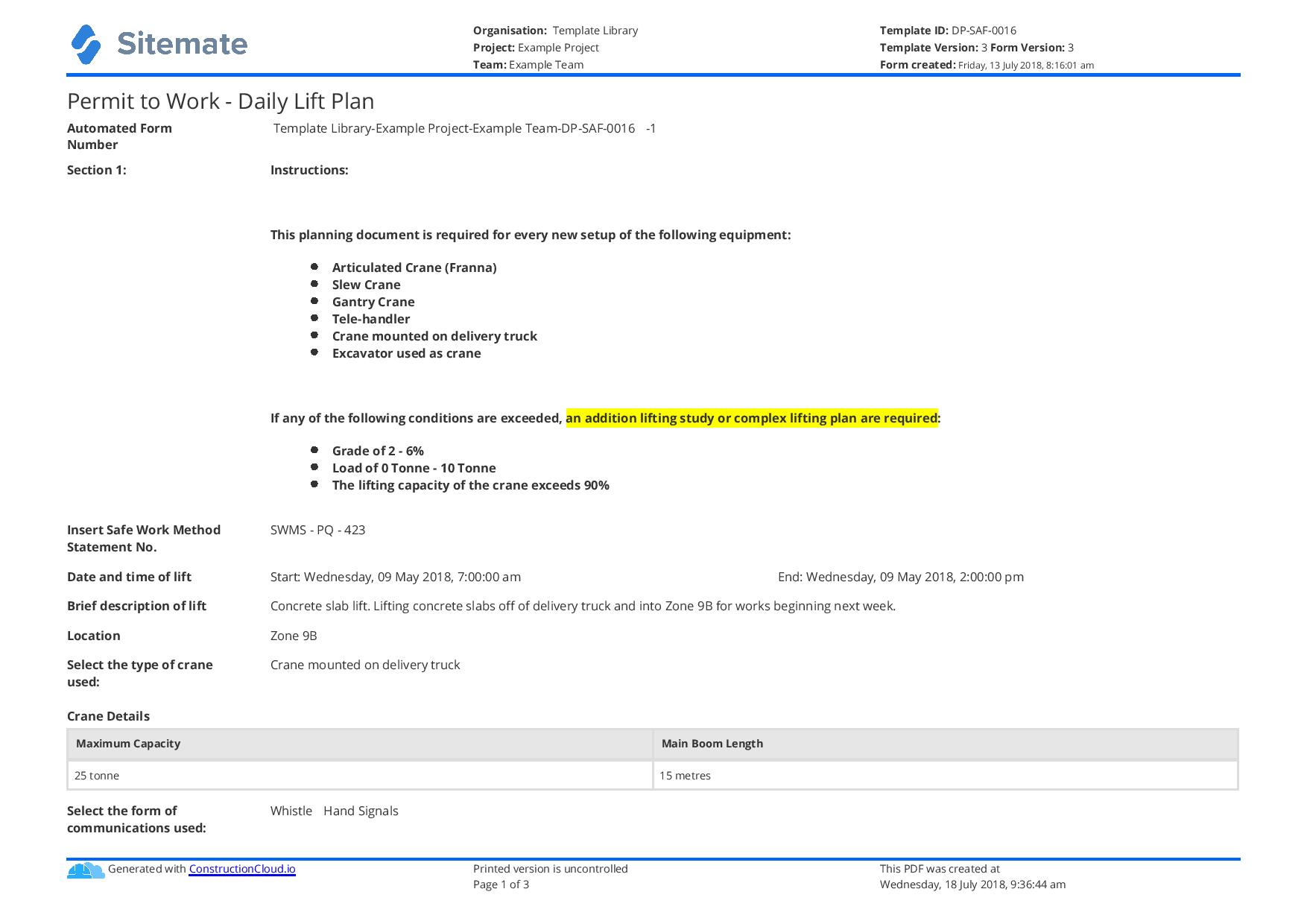

The risk assessment identifies the potential hazards and risk control precautions that need to be observed when carrying out the heavy lift. It identifies the personnel involved in the lift operation, their specific roles and their qualifications. The method statement lays out the sequence of activities to be carried out. In addition to the general site information, this section will include specific client contact information, who you call to go in or to come out of site in the evening, expected duration of works, agreed rules on wind speed and weather, etc.

For example, if there was a fire on the other side of the site, what do contractors need to do. It should also contain details of the site safety officer and other contacts within the site, as well as the emergency procedure in the event of an evacuation, even if it’s something that’s happening outside of the lifting operation. Every site has its own process for gaining access, induction requirements, Covid safety requirements, hours of working, speed limits, etc, as well as the general site rules and regulations. This section and the pre-lift information section below should contain all the relevant information needed for those going on to site. If relevant, drawings may also have information on exclusion zones. Site photos can also be added to help understanding.ĬAD drawings will be done to scale and include where the crane needs to be set up by measuring off fixed points on site and marking the working radius of the crane(s). They can illustrate information such as where you can and can’t slew, the direction of slew and site boundaries. It really depends on what is needed to communicate the information across to the team in the best way possible.ĭrawings are a lot more than just about showing a picture of the crane on the page. For example, for some lifts the drawing might be a straightforward plan and elevation and in other cases there may be several drawings needed. It’s important that both sign off on the plan so that they are fully aware of what they are lifting and the configuration needed for the crane itself.Įngineering drawingscan be simple or as detailed as required. This section also includes a place for the crane operator and crane supervisor to sign off to show that they have read the details. This ensures that you have the right crane for the load that you are lifting and the appropriate lifting gear. It includes the lift calculations and highlights the thought process in terms of ground bearing pressure, wind speed, lifting location, etc. This is often the most important element of the lift plan itself as it is site specific, gives you information on the load and on the crane. This should clearly state the lift it is referring to so that there can be no confusion with other similar lifts. That will be up to the Appointed Person who is responsible for compiling the plan. It should also contain an emergency plan for the worst-case scenario.ĭepending on the complexity of the lift, some of the sections of a lift plan might be more important than others and demand more emphasis. This ensures everyone knows exactly what each person is doing on the day and that this is thought about in advance so that all qualifications can be checked to make sure everyone has the experience necessary to carry out their required roles.

Importantly, it will name all those involved and the roles they have to play in the lifting operation. It needs to include a risk assessment so all hazards are identified and a plan is put in place to negate them. The lift plan will include a method statement as well as technical information on the crane set up and other relevant information about the lifting operation such as ground conditions, access to the site, etc. It is a site-specific document outlining everyone’s roles in the lifting operation to ensure a lift is carried out successfully. The lift plan is fundamental in ensuring a heavy lift is properly planned, resourced and organised so that lifting operations are carried out safely and efficiently. In this article we look at what needs to be done to compile a lift plan if you are doing it yourself, or what you should expect in a lift plan from your contractor.Ī lift plan encompasses risk assessments, method statements and other relevant information such as drawings, schedules and photographs.


 0 kommentar(er)
0 kommentar(er)
